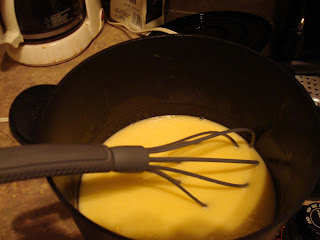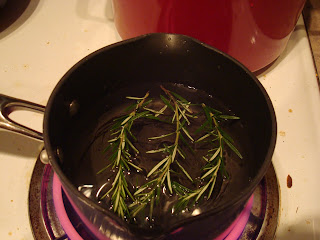That being said, here are some ideas. 5 courses, nothing too big, but with a decent amount of variety. Here's what I have in mind thus far:
- Tomato "Bisque": the idea for this course came around the time I was opining about guilty pleasures. This will be my first use of tomato on this menu, but in reality, I need to be using it more. I grew up eating tomatoes whole, or cut in half with a healthy dose of salt on them. If you have wonderfully fresh, garden variety tomatoes, the skies the limit--you just need to not be afraid of their acidity. I'm keeping this one underwraps until it's been tested, but for the sake of conversation, it may or may not include a ravioli, a basil/cream emulsion, and some . . . well . . . "coarse" salt.
- Salmon Tartare with Gruyere over Leeks and Spinach: this takes inspiration from a recent dish I did for a school-function, and it consisted of a ravioli stuffed with salmon mousse, green onion, and swiss cheese. I thought the combination was amazing; the sharp, tanginess of the swiss really set off the flavors of the salmon nicely. I'd like to bring the salmon flavor to perhaps a cleaner forefront (hence the tartare preparation), but I think that to offset it, a basic "salad" would work well to give it some balance and textural comparison.
- Butter-Poached Lobster with Rosemary, Beurre Monte, and Tomato Confit: this will be my second preparation of Keller's butter-poaching method, the first being a pretty decent smash. This is another dish where I really think the powers of the tomato can help out; the acidity should be offset by the beurre monte, and it should all wrap together very nicely. Lobster needs some acidity; hence the vinegar in the water while steeping. Add a bit more to finish, and it should be a nice pairing. And just to reiterate, rosemary, when it's not overpowering and at the forefront of the flavors, may be the most delectable spice to use with lobster.
- Braised Lamb Chop with Asparagus and Wild Mushrooms: lamb may be my favorite red meat; when done right, I can't help but literally suck the marrow out of the bone. I prepared lamb for Valentine's Day, and I think it went over really well. Asparagus seems to get a bad rap (or is it wrap? I guess it depends on how you're using it [the asparagus, that is?]), but the main task when preparing asparagus is to remove the bitterness. I like how mushrooms will contrast with that bitterness, and I think the earthiness really helps the lamb nicely. I'm not a fan of doing a lot to lamb; it's flavor is so rich that really, it stands on its own, and for my dish, it'll be at the forefront.
- Lemon Tart: simply put, this is a tribute to Marco Pierre White. I'll be adding my own twist, but the classic taste should remain the same. The structure, on the other hand . . .
I'll obviously be charting the progress of these dishes, that evening, and any possible changes. Your feedback is, as always, more than welcome!


























